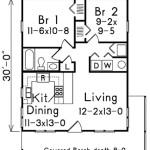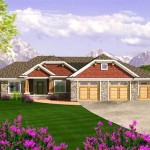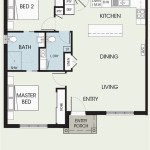House Plans with Large Back Porches
For many homeowners, the allure of a spacious back porch is undeniable. It offers a seamless transition between indoor and outdoor living, providing a dedicated space for relaxation, entertainment, and enjoying the natural surroundings. Incorporating a large back porch into house plans requires careful consideration of various factors, from architectural style and lot size to budget and lifestyle needs. This article explores the key elements involved in designing and planning a home centered around a generous outdoor living space.
Defining the Purpose of the Porch
Before delving into design specifics, it's crucial to define the intended purpose of the back porch. Will it primarily serve as a dining area, a lounge space for relaxation, an outdoor kitchen, or a combination of these functions? Clearly outlining the intended use will guide decisions regarding size, layout, and features.
Architectural Style and Integration
The architectural style of the house significantly influences the design of the back porch. A farmhouse might feature a wraparound porch with simple columns, while a craftsman-style home might incorporate a covered porch with exposed rafters and decorative brackets. Ensuring a harmonious integration between the porch and the main house is essential for aesthetic appeal and structural integrity. The materials used for the porch, such as flooring, railing, and roofing, should complement the overall design of the house.
Optimizing Size and Layout
Determining the appropriate size and layout of the back porch is crucial for maximizing functionality and comfort. Consider the anticipated number of occupants and the desired furniture arrangement. A large porch intended for dining and entertaining might benefit from a dedicated dining area, a separate seating area, and perhaps even an outdoor fireplace or kitchen. Traffic flow should be carefully considered to ensure easy movement between different zones of the porch and access to the interior of the house.
Material Selection and Durability
Choosing durable and weather-resistant materials is essential for ensuring the longevity of the back porch. Popular flooring options include pressure-treated wood, composite decking, and natural stone. Railings can be crafted from wood, metal, or composite materials. The roofing material should be chosen to complement the house's roof and provide adequate protection from the elements. Proper sealing and regular maintenance are crucial for preserving the integrity of these materials and extending their lifespan.
Incorporating Amenities and Features
A large back porch offers the opportunity to incorporate various amenities and features that enhance its functionality and enjoyment. An outdoor kitchen equipped with a grill, sink, and refrigerator can transform the porch into a culinary hub. A fireplace or fire pit provides warmth and ambiance, extending the usability of the porch into cooler evenings. Ceiling fans can improve air circulation and comfort during hot weather. Built-in lighting and electrical outlets provide convenience and functionality for evening gatherings.
Connecting the Indoors and Outdoors
Creating a seamless transition between the indoor and outdoor living spaces is key to maximizing the benefits of a large back porch. Large windows and sliding glass doors can visually connect the interior of the house to the porch, allowing natural light to flow into both spaces. Consider the placement of doorways and furniture to facilitate easy movement between the indoors and outdoors. Outdoor rugs and furniture can help create a comfortable and inviting atmosphere on the porch, blurring the lines between the two spaces.
Budget Considerations and Planning
Building a large back porch can represent a significant investment. It is essential to establish a realistic budget early in the planning process and to work closely with architects and contractors to ensure that the project stays within budget. Consider the cost of materials, labor, permits, and any additional features or amenities. Prioritizing essential features and phasing the project over time can help manage costs and ensure a successful outcome.
Local Regulations and Permits
Before commencing construction, it's crucial to research local building codes and obtain the necessary permits. Regulations may govern the size and height of the porch, the materials used, and the distance from property lines. Failing to comply with local regulations can result in delays, fines, and even the need to dismantle the porch. Consulting with local authorities and obtaining the required permits before starting construction is vital for a smooth and compliant process.

Modern Country Home Plan With 4 Beds And A Large Back Porch Fireplace 860060mcd Architectural Designs House Plans

New American House Plan With Open Floor And Large Covered Patio In Back 62377dj Architectural Designs Plans

Plan 46041hc Hill Country Home With Massive Porch Homes Ranch Style House Plans

Your Guide To House Plans With Screened In Porches Houseplans Blog Com

Minimalist Floor Plans With Porches Houseplans Blog Com

House Plan 51583 Southern Style With 1841 Sq Ft 3 Bed 2 Bath

Plan 4413 Design Studio House Blueprints Plans Farmhouse New

Southern Living Dreamy House Plans With Front Porches Blog Dreamhomesource Com

Southern Living Dreamy House Plans With Front Porches Blog Dreamhomesource Com

House Plans With Porches Front Back Screened More








